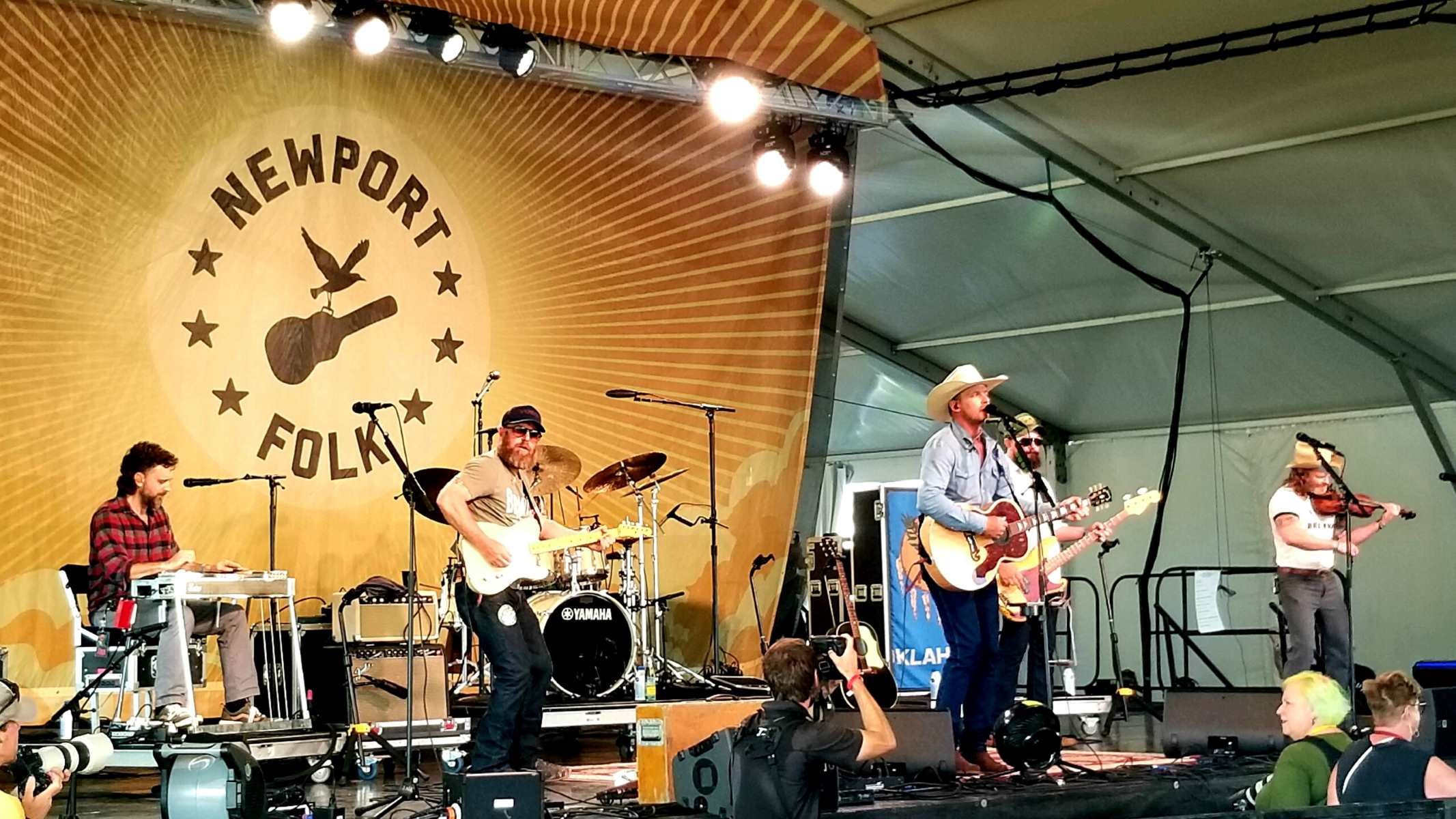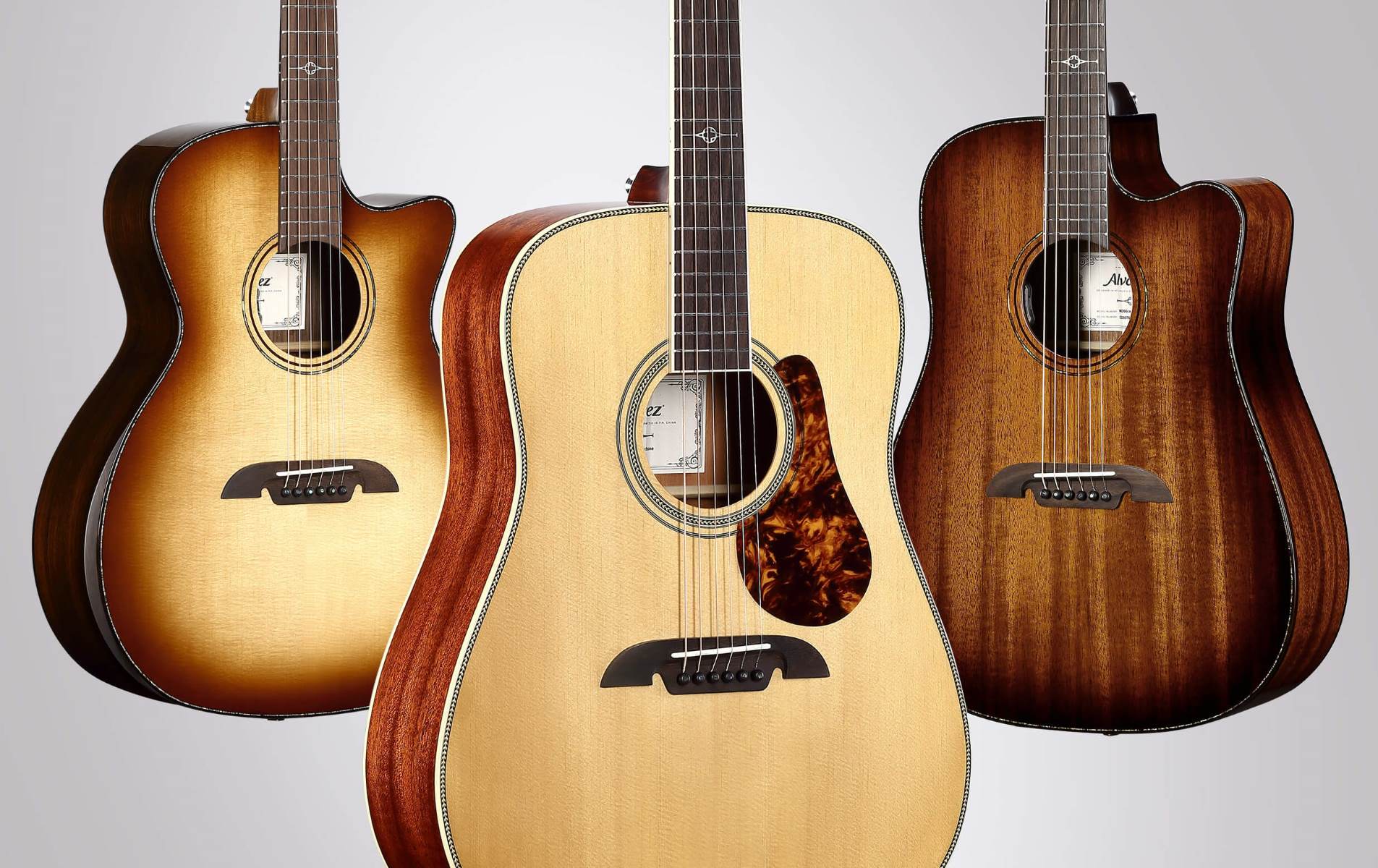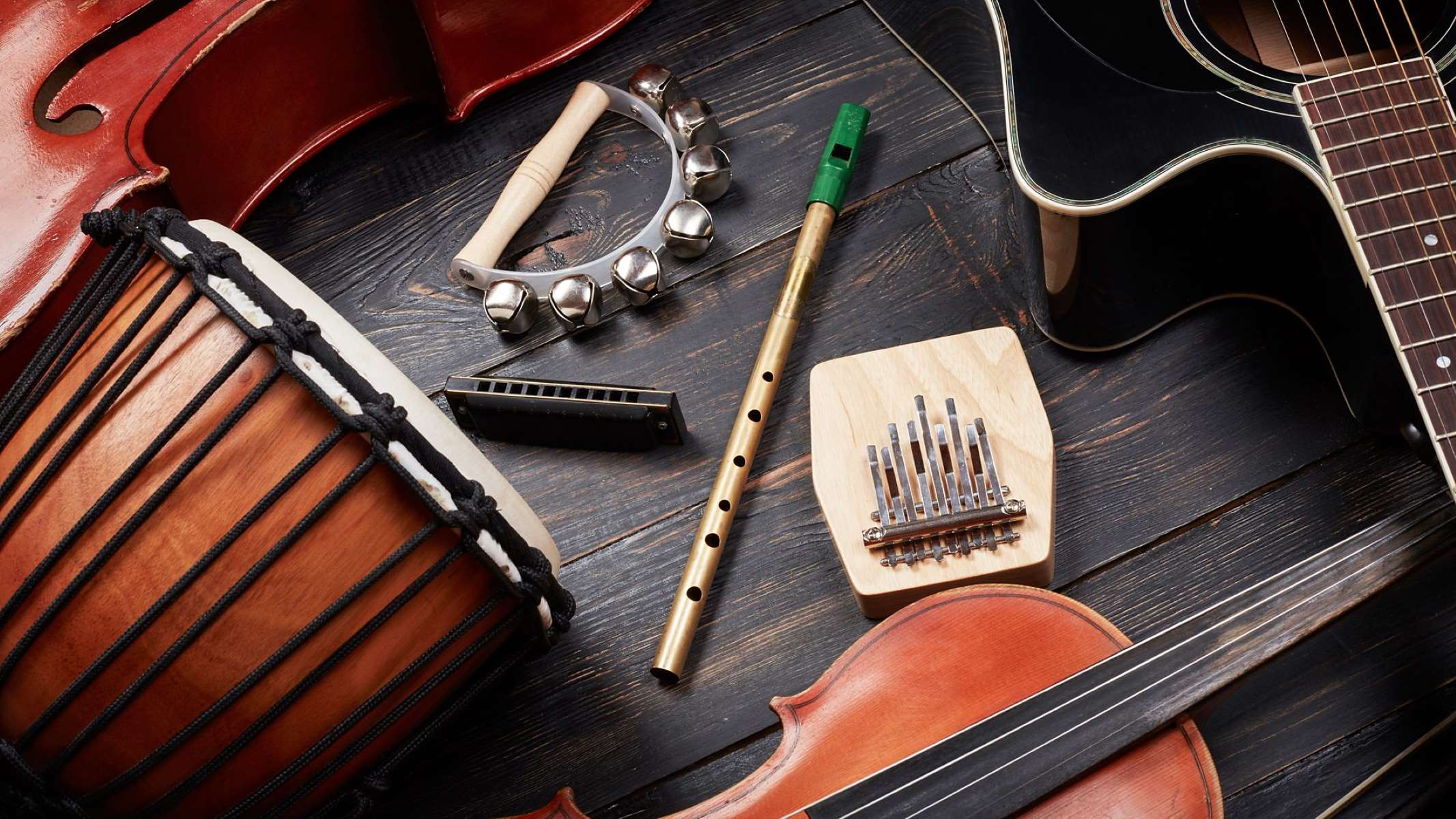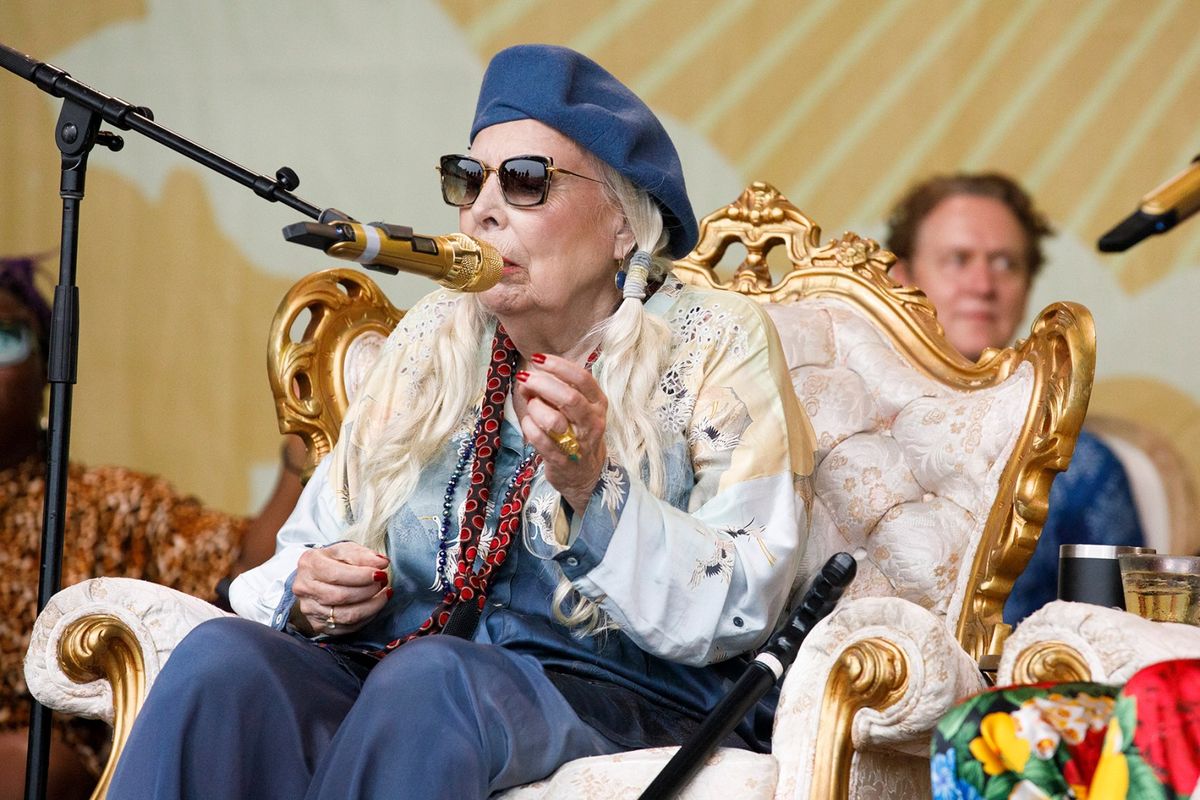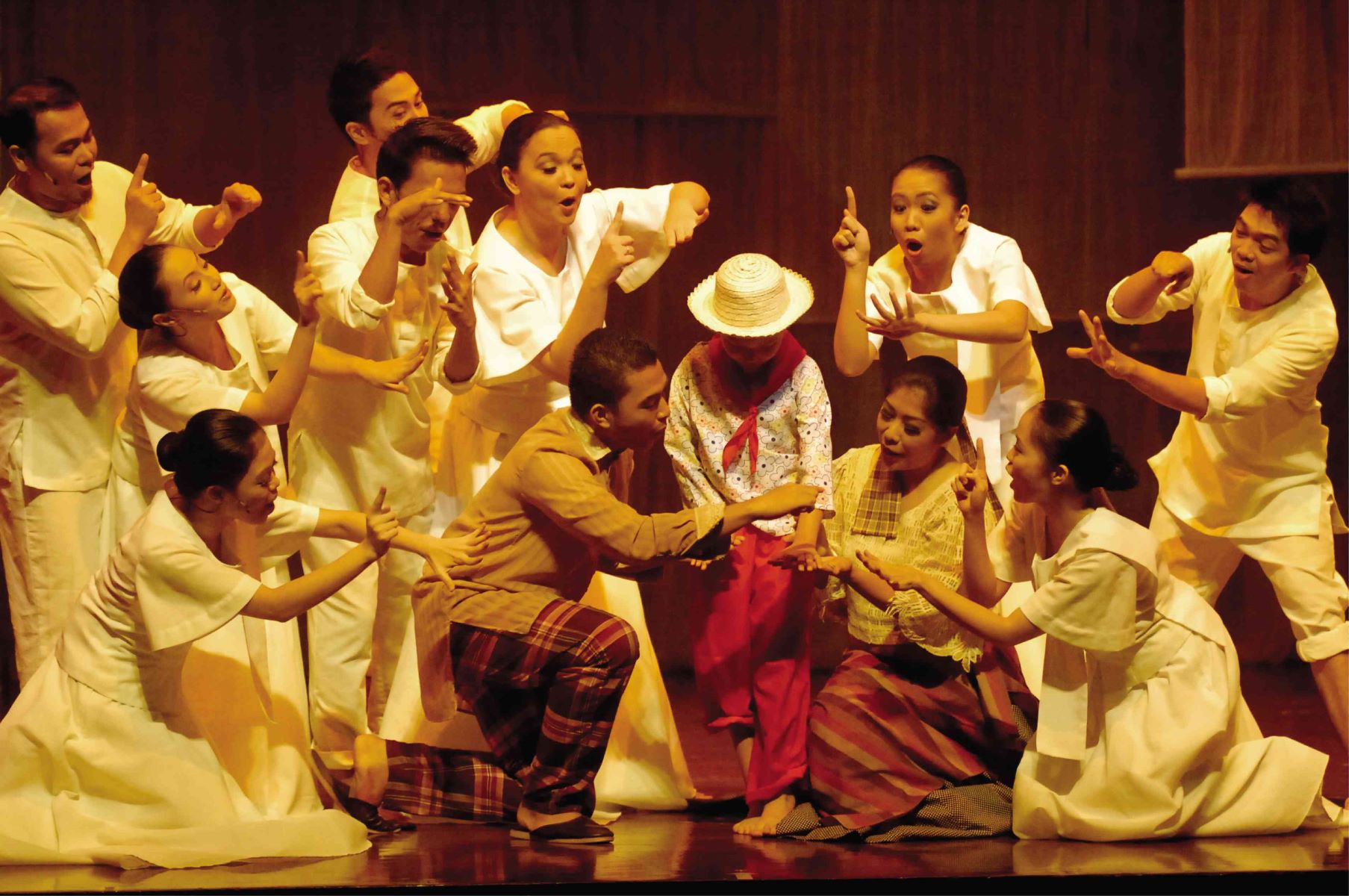

Folk
What Is The Folk Festival
Modified: January 22, 2024
Discover the vibrant world of folk music and traditions at the Folk Festival. Immerse yourself in the captivating melodies, lively dances, and rich cultural heritage of this annual event.
(Many of the links in this article redirect to a specific reviewed product. Your purchase of these products through affiliate links helps to generate commission for AudioLover.com, at no extra cost. Learn more)
Table of Contents
Introduction
Folk festivals are vibrant celebrations of traditional culture and art, providing a platform for communities to come together and showcase their heritage. These events, rooted in the rich history and traditions of a particular region or community, offer a glimpse into the identity, values, and customs of the people.
With roots that trace back centuries, folk festivals have evolved over time, adapting to changing social and cultural landscapes while keeping the essence of tradition alive. They serve as a platform for folk musicians, dancers, artisans, and storytellers to share their craft and connect with audiences who appreciate and value cultural heritage.
Folk festivals are not limited to a specific country or region; they exist in various forms around the world. From the lively and colorful celebrations of the Caribbean to the soulful melodies of Irish folk music, each festival has its own unique characteristics and charm.
These festivals often take place in outdoor settings, such as parks, town squares, or meadows, creating a festive atmosphere where people can immerse themselves in the sights, sounds, and tastes of folk traditions. The air is filled with the melodies of traditional music, the aroma of local cuisine, and the joyful laughter of attendees.
At a folk festival, visitors have the opportunity to engage with diverse forms of folk art, including music, dance, visual arts, handicrafts, and storytelling. It’s a chance to witness the mastery of seasoned performers and discover emerging talents within the folk community.
In recent years, folk festivals have gained popularity not only among locals but also among tourists seeking an authentic cultural experience. These events have become a valuable tourist attraction, drawing visitors from near and far who are eager to immerse themselves in the local traditions and folklore of a particular region.
Throughout this article, we will delve deeper into the origins of folk festivals, explore their characteristics, examine regional variations, discuss their cultural significance, analyze their economic impact, and explore their evolution in contemporary times. Join us on this journey as we uncover the captivating world of folk festivals.
Origins of Folk Festivals
Folk festivals have their roots in ancient traditions and customs that have been passed down through generations. These festivals were originally celebrated to mark significant events in agricultural cycles, religious observances, or community milestones.
One of the earliest recorded folk festivals can be traced back to ancient civilizations such as the Egyptians, Greeks, and Romans. These festivals often revolved around agricultural practices, honoring gods and goddesses associated with fertility and harvest. They included rituals, music, dance, and feasting to ensure bountiful crops and favorable weather conditions.
In medieval Europe, folk festivals took on a more Christian influence, with celebrations like Christmas markets and Easter fairs becoming popular. These festivities combined elements of pagan traditions with Christian beliefs, creating a unique blend of folk customs.
During the Renaissance period, folk festivals became more elaborate and extravagant, with royal courts patronizing musicians, dancers, and artists. Festivals such as May Day celebrations, harvest festivals, and carnivals gained popularity across Europe, allowing people from all walks of life to come together in a spirit of camaraderie and festivity.
As colonization spread throughout the world, the traditions of folk festivals were carried to new territories by settlers. These festivals transformed, adapting to the local cultures and incorporating new elements while preserving their core traditions. For example, in the Americas, the blending of European, African, and indigenous cultures gave rise to unique folk festivals like Mardi Gras and Dia de los Muertos.
In the 20th century, folk festivals experienced a resurgence of interest and popularity. The folk music revival movement, particularly in the United States and the United Kingdom, played a significant role in renewing public enthusiasm for folk culture. Artists like Woody Guthrie, Pete Seeger, and Bob Dylan used their music to connect with working-class audiences and revive traditional folk songs.
Today, folk festivals continue to thrive and evolve, celebrating a wide array of cultural expressions from around the world. They serve as a window into the past, preserving and promoting the unique heritage and traditions of communities while embracing contemporary influences. From large-scale international festivals to intimate local gatherings, these events provide a platform for cultural exchange, artistic expression, and the celebration of diversity.
Characteristics of Folk Festivals
Folk festivals are characterized by several key features that set them apart from other types of cultural events. These characteristics contribute to the unique and lively atmosphere that defines a folk festival.
1. Celebration of Tradition: Folk festivals are rooted in the celebration and preservation of traditional folk culture. They provide a platform for communities to showcase their customs, rituals, music, dance, crafts, and storytelling, allowing attendees to experience the richness of cultural heritage.
2. Community Involvement: Folk festivals are inclusive and community-oriented events. They often involve local residents, artists, artisans, and volunteers who actively participate in organizing and showcasing their traditions. This creates a sense of belonging and fosters a strong community spirit.
3. Outdoor Settings: Folk festivals typically take place in outdoor settings, such as parks, town squares, or meadows. This open-air environment allows attendees to enjoy the festivities in a natural and relaxed atmosphere, while also providing space for performances, food stalls, and artisan markets.
4. Live Music and Dance: Music and dance are at the heart of folk festivals. They feature live performances by folk musicians, bands, and dancers, showcasing traditional melodies, rhythms, and steps. From foot-stomping jigs to soulful ballads, the music and dance performances create an energetic and captivating experience.
5. Handicrafts and Artisanal Products: Folk festivals often include marketplaces or stalls where local artisans display and sell their handmade crafts, artworks, and traditional products. These offerings allow attendees to explore and appreciate the craftsmanship and unique creations of the local community.
6. Food and Culinary Delights: Folk festivals are a treat for the taste buds, as they showcase local culinary specialties and traditional recipes. From food trucks and stalls offering regional delicacies to cooking demonstrations and food contests, attendees can indulge in a diverse range of flavors.
7. Interactive Workshops and Demonstrations: To further engage attendees, folk festivals frequently offer interactive workshops and demonstrations where visitors can learn traditional crafts, musical instruments, dance steps, or even participate in storytelling sessions. These activities provide a hands-on experience and foster a deeper connection with the cultural traditions.
8. Family-Friendly Atmosphere: Folk festivals are often family-friendly events, with activities and entertainment suitable for all ages. From children’s workshops and puppet shows to games and storytelling sessions, these festivals offer a welcoming and inclusive environment for attendees of all generations.
These characteristic elements contribute to the vibrant and festive ambiance of folk festivals, creating an immersive experience that celebrates the diversity, creativity, and legacy of traditional folk culture.
Traditional Music and Dance
Traditional music and dance are integral components of folk festivals, captivating audiences and immersing them in the cultural traditions of a community or region. The intertwining of music and dance at these events creates a captivating spectacle that reflects the unique heritage and identity of the folk culture being celebrated.
Traditional Music:
Traditional music at folk festivals encompasses a wide range of genres, instruments, and vocal styles. From foot-stomping reels to soulful ballads, each culture and region has its own distinct musical traditions that are showcased and celebrated.
Instruments such as fiddles, bagpipes, drums, accordions, mandolins, and flutes are often featured prominently in traditional folk music. These instruments produce melodies and rhythms that reflect the history, landscape, and daily lives of the people who have passed down these musical traditions through generations.
The lyrics of traditional folk songs often tell stories of love, hardship, humor, and historical events, capturing the essence of the culture and providing a glimpse into the lives and experiences of the community. Singers or bands perform these songs, captivating audiences with emotive and powerful vocal performances that are both entertaining and enlightening.
Traditional Dance:
Dance is another vital element of folk festivals, with each region having its own distinct styles and movements. Traditional dance reflects the history, customs, and social interactions of a community, often accompanied by live music to create a cohesive and engaging experience.
From energetic and lively group dances to intricate solo performances, traditional dance forms captivate audiences with their rhythm, grace, and cultural significance. These dances often involve intricate footwork, hand gestures, and storytelling elements, conveying the traditions, beliefs, and emotions of the community.
At folk festivals, spectators may have the opportunity to witness captivating performances of popular traditional dances such as the Irish jig, the flamenco of Spain, the samba of Brazil, or the square dance of the United States. These dances not only entertain but also serve as a means of connecting with and preserving cultural heritage.
One of the unique aspects of traditional music and dance at folk festivals is the participatory nature of the performances. Attendees are often encouraged to join in and learn the steps, creating a sense of community and fostering an appreciation for the cultural traditions that are being celebrated.
Traditional music and dance form the backbone of folk festivals, providing a window into the cultural heritage and artistic expressions of a community or region. These art forms ignite a sense of joy, excitement, and unity, allowing attendees to immerse themselves in the vibrant energy of the folk festival experience.
Regional Variations of Folk Festivals
Folk festivals exhibit a wide range of regional variations around the world, each embracing the unique cultural traditions and customs of a specific area. These variations reflect the diversity of folk cultures and offer a glimpse into the distinctive characteristics and artistic expressions of different regions.
Europe:
Europe is known for its rich and diverse folk traditions, and many countries across the continent host vibrant folk festivals. In Ireland, festivals like the Fleadh Cheoil celebrate traditional Irish music, featuring lively sessions, competitions, and performances by renowned musicians. In Scotland, the Highland Games showcase traditional sports, music, and dance, accompanied by the stirring sounds of bagpipe music. Additionally, countries like Spain, Greece, and Hungary have their own unique festivals that display regional folk music, dance, and traditional costumes.
Asia:
Asia boasts a multitude of folk festivals that showcase the vibrant and diverse cultural heritage of the region. In Japan, the Nebuta Festival displays illuminated floats, parades, and traditional music and dance. In India, various states celebrate festivals such as Navratri and Baisakhi, which involve colorful dances like Garba and Bhangra. The Holi festival in Nepal and India is renowned for its joyful atmosphere and vibrant celebrations of music, dance, and color.
Africa:
African folk festivals are deeply rooted in traditional music, dance, and rituals. Festivals like the Cape Town International Jazz Festival in South Africa bring together renowned jazz musicians from around the world, while the Durbar Festival in Nigeria showcases traditional equestrian displays, music, and dance. The Festival au Désert in Mali celebrates the nomadic music of the Sahara region, featuring performances by local and international artists.
Americas:
The Americas are home to a multitude of folk festivals that highlight the cultural diversity of the region. In the United States, events like the New Orleans Jazz & Heritage Festival and the Newport Folk Festival showcase a blend of musical genres such as blues, jazz, folk, and country. Latin American countries have their own distinct festivals, like Carnival in Brazil, Dia de los Muertos in Mexico, and the Calle Ocho Festival in Miami, which celebrate vibrant music, dance, and cultural traditions.
Oceania:
Oceania is known for its indigenous cultures and folk traditions. In Australia, festivals like the Woodford Folk Festival bring together artists from various backgrounds, showcasing a fusion of traditional and contemporary folk music and performances. In New Zealand, the Pasifika Festival showcases the music, dance, and traditional arts of Pacific Island cultures.
These are just a few examples of the regional variations of folk festivals around the world. Each festival encapsulates the unique cultural identity and artistic expressions of its respective region, creating a tapestry of diverse traditions that captivate and inspire attendees.
Cultural Significance of Folk Festivals
Folk festivals hold immense cultural significance, serving as a means of preserving, promoting, and celebrating the traditions, customs, and artistic expressions of a community or region. These festivals play a crucial role in fostering a sense of identity, connection, and pride in cultural heritage.
Preservation of Cultural Traditions:
Folk festivals serve as a platform to showcase and preserve traditional customs, rituals, music, dance, and craft techniques that have been passed down through generations. By providing a space for these traditions to be displayed and appreciated, these festivals ensure that cultural heritage is not forgotten or lost over time.
Community Interaction and Unity:
Folk festivals create opportunities for community interaction, allowing people to come together and engage in shared experiences. These events foster a sense of belonging and unity among attendees, as they celebrate and connect with their shared cultural roots. It strengthens community bonds and encourages social cohesion.
Education and Transmission of Knowledge:
Folk festivals offer a unique educational experience, providing a firsthand understanding of cultural practices and traditions. Through live performances, workshops, demonstrations, and storytelling sessions, attendees have the opportunity to learn about traditional arts, crafts, and skills while gaining insight into the historical and social contexts behind them.
Preservation of Oral Traditions:
Many folk festivals showcase the oral traditions of storytelling, allowing for the preservation and promotion of folklore, legends, myths, and historical narratives. This ensures that these narratives, often passed down through generations, are kept alive and shared with wider audiences.
Revitalization and Innovation:
While folk festivals focus on traditional cultural expressions, they also allow for the adaptation and innovation of these art forms. Artists and performers have the freedom to reinterpret and infuse contemporary elements, breathing new life into traditional music, dance, and crafts, and ensuring their relevance in modern times.
Cultural Tourism and Economic Impact:
Folk festivals have become a valuable tourist attraction, drawing visitors from near and far who seek an authentic cultural experience. These festivals not only enrich the cultural fabric of a region but also contribute to the local economy through tourism, hospitality, arts and crafts sales, and other associated industries.
Folk festivals play a vital role in promoting cultural diversity, fostering intercultural dialogue, and nurturing a deeper appreciation for the beauty and diversity of global heritage. They provide a platform for cultural exchange, artistic expression, and the celebration of human creativity.
Economic Impact of Folk Festivals
Folk festivals not only hold cultural significance but also have a significant economic impact on the communities and regions where they take place. These events attract visitors, stimulate local businesses, support job creation, and contribute to the overall economic growth of the area.
Boost in Tourism:
Folk festivals draw tourists from near and far, attracting a significant number of visitors who are interested in experiencing the cultural heritage of a particular region. These tourists bring in revenue through accommodation bookings, dining at local restaurants, and shopping for souvenirs and crafts, thereby boosting the local tourism industry.
Increased Footfall:
During the festival period, there is an increase in footfall in the surrounding areas. Local businesses such as hotels, restaurants, cafes, and shops benefit from increased customer traffic, leading to higher sales and profits. The influx of festival-goers creates a ripple effect, benefiting the wider economy of the region.
Job Creation:
Folk festivals require a significant workforce to organize and manage various aspects of the event, such as logistics, security, stage management, and hospitality. This leads to the creation of temporary employment opportunities, benefiting local individuals and contributing to the local economy. Additionally, artisans, musicians, and performers involved in the festival also generate income through their participation.
Support for Local Artisans:
Folk festivals often feature artisan markets or stalls where local craftspeople and artisans showcase and sell their handmade products. This provides a platform for these artisans to generate income and gain exposure for their work. The festival environment allows attendees to appreciate and support local craftsmanship, contributing to the sustainability of traditional arts and crafts.
Promotion of Local Products and Services:
Folk festivals provide an opportunity for local businesses, farmers, and producers to showcase and promote their products and services. This includes local food and beverages, traditional handicrafts, locally sourced products, and other regional specialties. The exposure gained during the festival can lead to increased sales and brand recognition for these producers, benefiting the local economy in the long run.
Economic Multiplier Effect:
The economic impact of folk festivals extends beyond the immediate festival period. The influx of visitors and increased economic activity can lead to a multiplier effect, where the money spent during the festival circulates within the local economy. This can result in increased investment, business development, and infrastructure improvements in the region.
Overall, the economic impact of folk festivals goes beyond the cultural realm, offering a significant contribution to the local economy. These events generate tourism revenue, support local businesses and employment opportunities, promote traditional crafts and products, and contribute to the overall economic well-being of the communities that host them.
Evolution and Adaptation of Folk Festivals
Folk festivals have evolved and adapted over time to reflect changing social, cultural, and artistic landscapes. While rooted in tradition, these festivals have embraced new influences, technologies, and artistic expressions to remain relevant and engaging to contemporary audiences.
Expansion of Cultural Representation:
In the past, folk festivals predominantly showcased the traditions and heritage of a specific community or region. However, modern folk festivals have expanded their scope to incorporate a broader range of cultures, offering a platform for diverse communities to share their traditions and foster intercultural exchange.
Integration of Modern and Traditional Elements:
Folk festivals have successfully incorporated modern elements to attract a wider audience while maintaining their traditional core. This integration can be seen in the use of modern technological advancements for sound systems, stage lighting, and visual effects, enhancing the overall festival experience without compromising the authenticity of the performances.
Innovation in Folk Music:
While traditional folk music remains an integral part of festivals, there has been a surge in modern interpretations and fusion genres. Artists and bands have experimented with blending folk music with contemporary styles such as rock, jazz, electronic music, and world music. This allows for the exploration of new musical horizons while preserving the essence of traditional folk melodies and instruments.
Fusion of Traditional and Contemporary Dance:
Similar to music, dance performances at folk festivals have seen a fusion of traditional and contemporary elements. Artists and choreographers incorporate elements of modern dance techniques, movement styles, and storytelling approaches to present traditional dances in innovative and captivating ways.
Adaptation to Urban Spaces:
Traditionally, folk festivals were primarily held in rural areas or small towns. However, modern folk festivals have adapted to urban settings, utilizing city parks, plazas, and cultural centers to accommodate larger audiences and facilitate easier accessibility. This shift has allowed urban dwellers to participate in and appreciate traditional folk culture.
Emphasis on Sustainability and Eco-consciousness:
Many contemporary folk festivals have embraced the principles of sustainability and environmental consciousness. Efforts are made to reduce waste, use renewable energy sources, promote local and organic food, and encourage eco-friendly practices among attendees. This reflects a commitment to preserving not just cultural traditions but also the natural environment that provides the backdrop for these festivals.
Greater Audience Engagement:
Modern folk festivals strive to create a more immersive and interactive experience for attendees. This includes workshops, open mic sessions, storytelling circles, and opportunities for visitors to try traditional arts and crafts firsthand. These activities encourage active participation, fostering a deeper connection between the audience and the cultural traditions being showcased.
As folk festivals continue to evolve and adapt, they demonstrate their ability to embrace change while staying true to their roots. They serve as living representations of cultural heritage, providing a platform for creativity, cross-cultural dialogue, and the celebration of diversity and tradition amidst the ever-changing world we live in.
Contemporary Folk Festivals
Contemporary folk festivals are a testament to the enduring relevance and appeal of folk culture in the modern world. These festivals have evolved to embrace a wide range of artistic expressions, attracting diverse audiences and celebrating the beauty and diversity of human creativity.
Music Exploration and Fusion:
Contemporary folk festivals showcase a variety of musical genres and styles, often blending traditional folk with elements of rock, indie, world music, and more. Artists experiment with innovative arrangements, instrumentation, and vocal techniques, infusing new energy into traditional folk melodies while maintaining a deep respect for their roots.
Embracing Cultural Diversity:
Contemporary folk festivals prioritize inclusivity and celebrate cultural diversity. They provide a platform for artists from various backgrounds and traditions to share their music, dance, and art with a wide audience. These festivals aim to break down barriers, foster understanding, and promote intercultural exchange through the power of folk culture.
Integrating Visual and Performing Arts:
Contemporary folk festivals go beyond presenting music and dance performances. They often incorporate visual arts, including exhibitions, installations, and live painting demonstrations. This convergence of different art forms creates a multidimensional experience that enriches the overall festival atmosphere.
Social and Environmental Activism:
Many contemporary folk festivals embrace social and environmental causes, using their platform to raise awareness about important issues. These festivals showcase artists who are passionate about activism, advocating for peace, justice, sustainability, and other pressing concerns. Workshops and discussions are often held to inspire change and promote positive action.
Family-Friendly and Educational:
Contemporary folk festivals strive to create a welcoming and inclusive environment for attendees of all ages. They often include dedicated children’s areas with activities, workshops, and performances tailored to younger audiences. Additionally, educational programs and workshops provide opportunities for individuals to learn traditional crafts, musical instruments, and dance styles, ensuring the preservation of cultural knowledge.
Integration of Technology:
Contemporary folk festivals harness the power of technology to enhance the festival experience. Social media platforms, live streaming, and interactive apps enable wider participation and engagement, allowing individuals who cannot attend in person to experience the festival virtually. This digital presence also amplifies the reach and impact of folk festivals beyond their physical boundaries.
Contemporary folk festivals demonstrate the evolution and versatility of folk culture, offering a platform for artists and audiences to explore, celebrate, and reinterpret traditions in new and exciting ways. These festivals continue to thrive, bridging the gap between traditional folk expressions and the contemporary world while inspiring creativity, fostering cultural connections, and nurturing a global community united by their love for folk culture.
Conclusion
Folk festivals are more than just gatherings; they are vibrant celebrations of cultural heritage, artistic expressions, and the spirit of community. These festivals have evolved through time, adapting to changing social, cultural, and artistic landscapes while preserving the essence of tradition.
Originating from ancient customs and rituals, folk festivals have thrived across the globe, each incorporating unique regional traditions and customs. They are marked by live music, dance performances, artisanal crafts, and flavorful cuisine, creating an immersive experience that captivates attendees and fosters a sense of cultural pride.
Throughout the years, folk festivals have played a significant role in preserving cultural traditions, fostering community interaction, transmitting knowledge, and promoting intercultural exchange. They bring people together, fostering a sense of belonging and unity, while simultaneously attracting tourists and providing economic benefits to local communities.
Contemporary folk festivals have pushed boundaries, embracing innovation, integration of diverse cultures, and the fusion of traditional and modern artistic elements. They have expanded their reach, incorporating visual arts, workshops, and social activism, creating a more inclusive and interactive experience for attendees.
As we look to the future, folk festivals will continue to evolve, adapt, and thrive. They will serve as powerful platforms for artistic expression, cultural exchange, and exploration of our diverse human heritage. From the vibrant rhythms of African drums to the haunting melodies of Celtic tunes, folk festivals will continue to inspire, educate, and foster a deeper appreciation for the beauty and significance of folk culture.
So let us immerse ourselves in the joyous celebrations, the captivating performances, and the rich cultural tapestry that folk festivals offer. Let us embrace the traditions of the past while pushing the boundaries of artistic expression and cultural understanding. Through folk festivals, we can come together, celebrate our shared humanity, and create a future where the beauty and diversity of our world’s cultural heritage continue to thrive.




